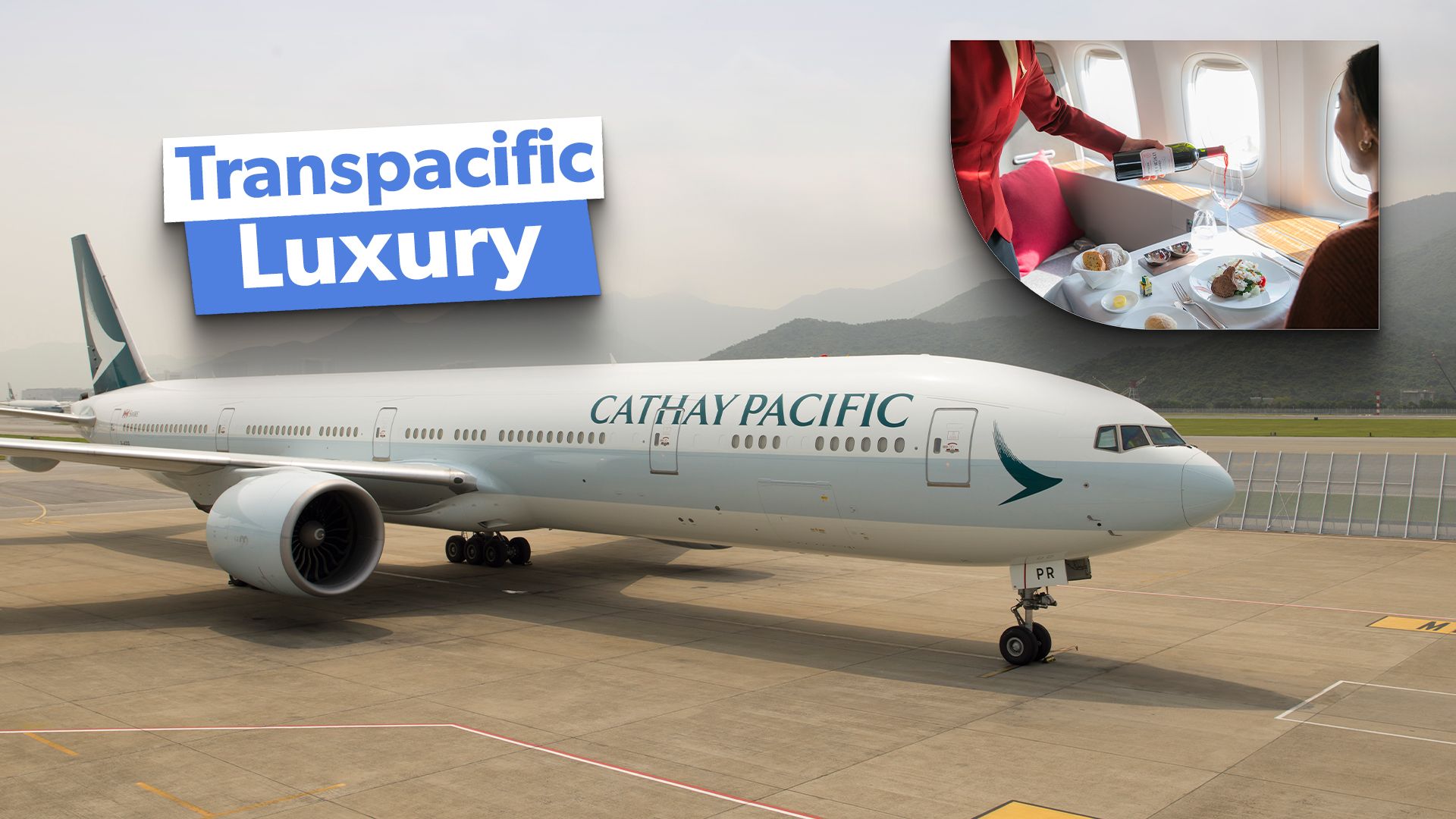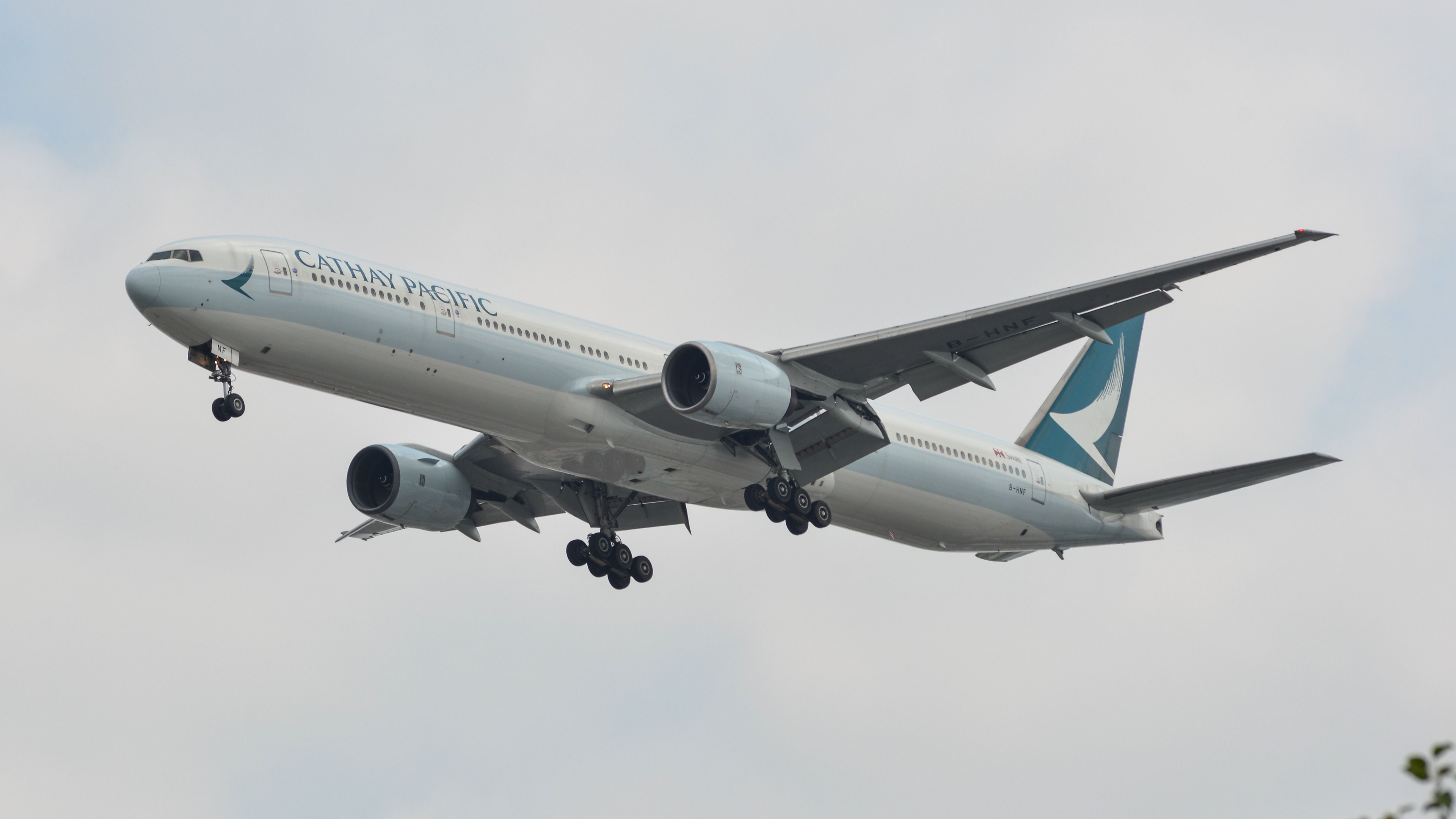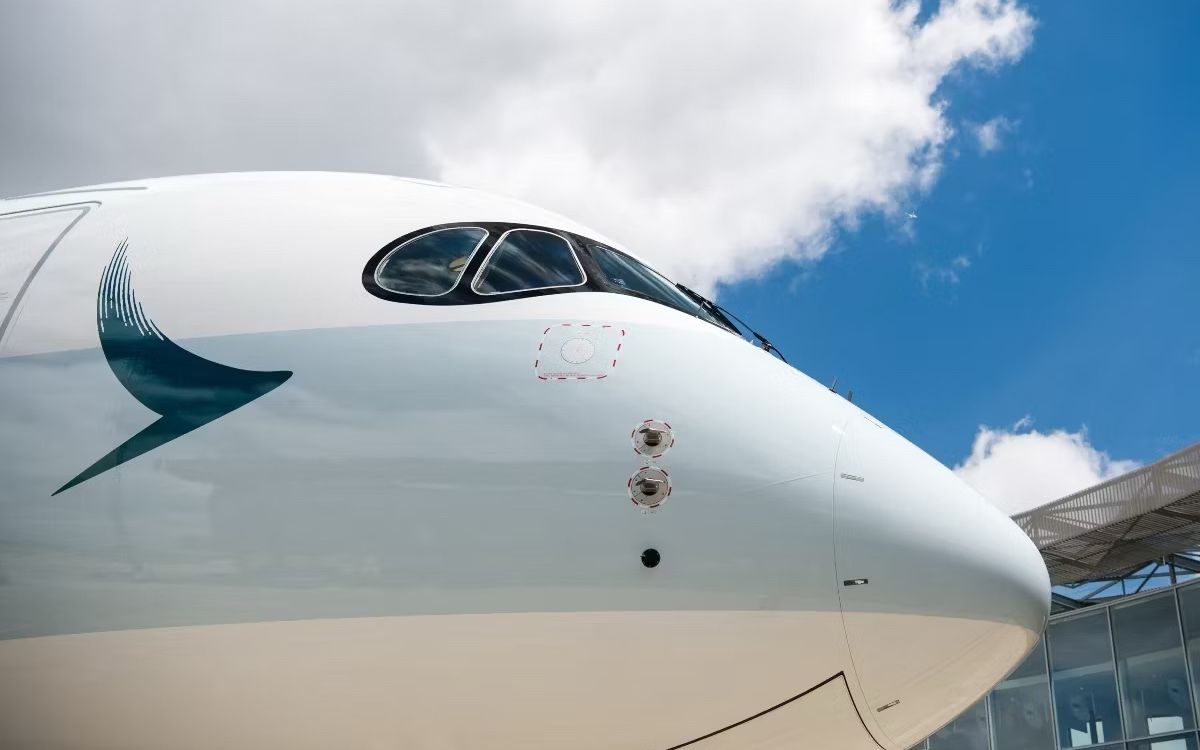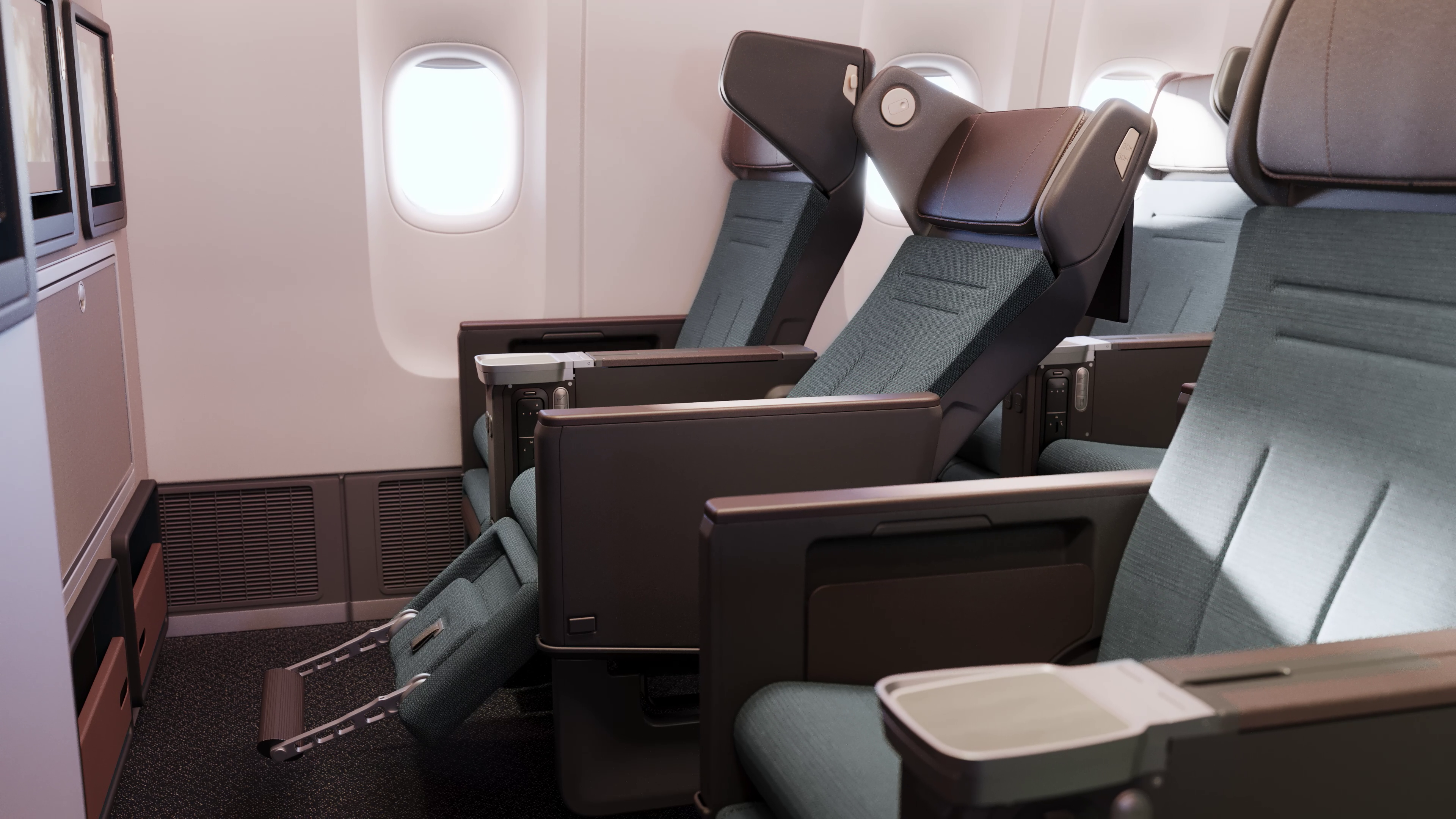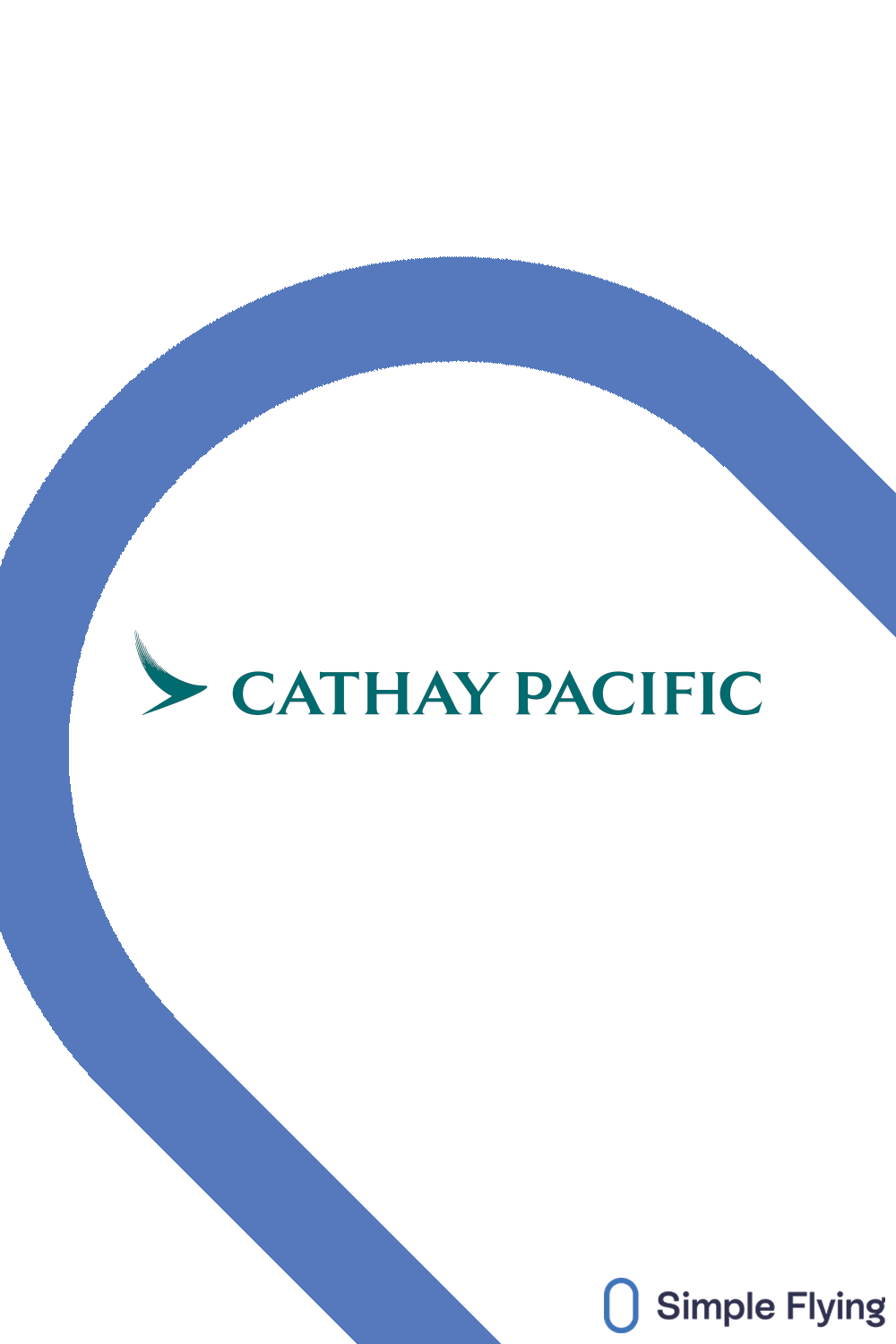Summary
- Cathay Pacific connects major US cities to Hong Kong, serving as a gateway for seamless travel.
- The airline uses modern Boeing 777-300ER and Airbus A350-1000 aircraft, with luxury options across cabins.
- Cathay Pacific’s operational data shows the airlines’ efficiency in catering to the US market’s demands.
In the highly competitive world of international air travel, Cathay Pacific has long stood out as a premier carrier known for its exceptional service, modern fleet, and extensive network. Among its most significant operations are its routes to the United States, which connect the bustling hubs of Hong Kong with vital American cities.
Let’s examine Cathay Pacific’s US-bound routes, the cities served, the types of aircraft used, the onboard experience, the strategic importance of these routes for the airline, and critical operational data provided by Cirium, an aviation analytics company.
Across the Pacific from west to east
Cathay Pacific began its US operations in 1983, establishing its first transpacific route between Hong Kong and San Francisco. This inaugural flight marked a significant expansion for the airline, positioning it as a key player in the competitive international aviation market. The move was part of a broader strategy to connect Asia with major global hubs, catering to both business and leisure travelers.
Photo: Terry K | Shutterstock
Over the subsequent decades, Cathay Pacific expanded its US footprint, adding routes to Los Angeles, New York, Boston, and Chicago. These routes provided vital links for economic and cultural exchanges and underscored Cathay Pacific’s commitment to offering premium service and connectivity.
This strategic expansion was essential for meeting the growing demand for travel between Asia and North America, solidifying Cathay Pacific’s reputation as a world-class airline. The airline’s focus on innovation, customer service, and fleet modernization has helped it maintain a competitive edge in the transpacific market.
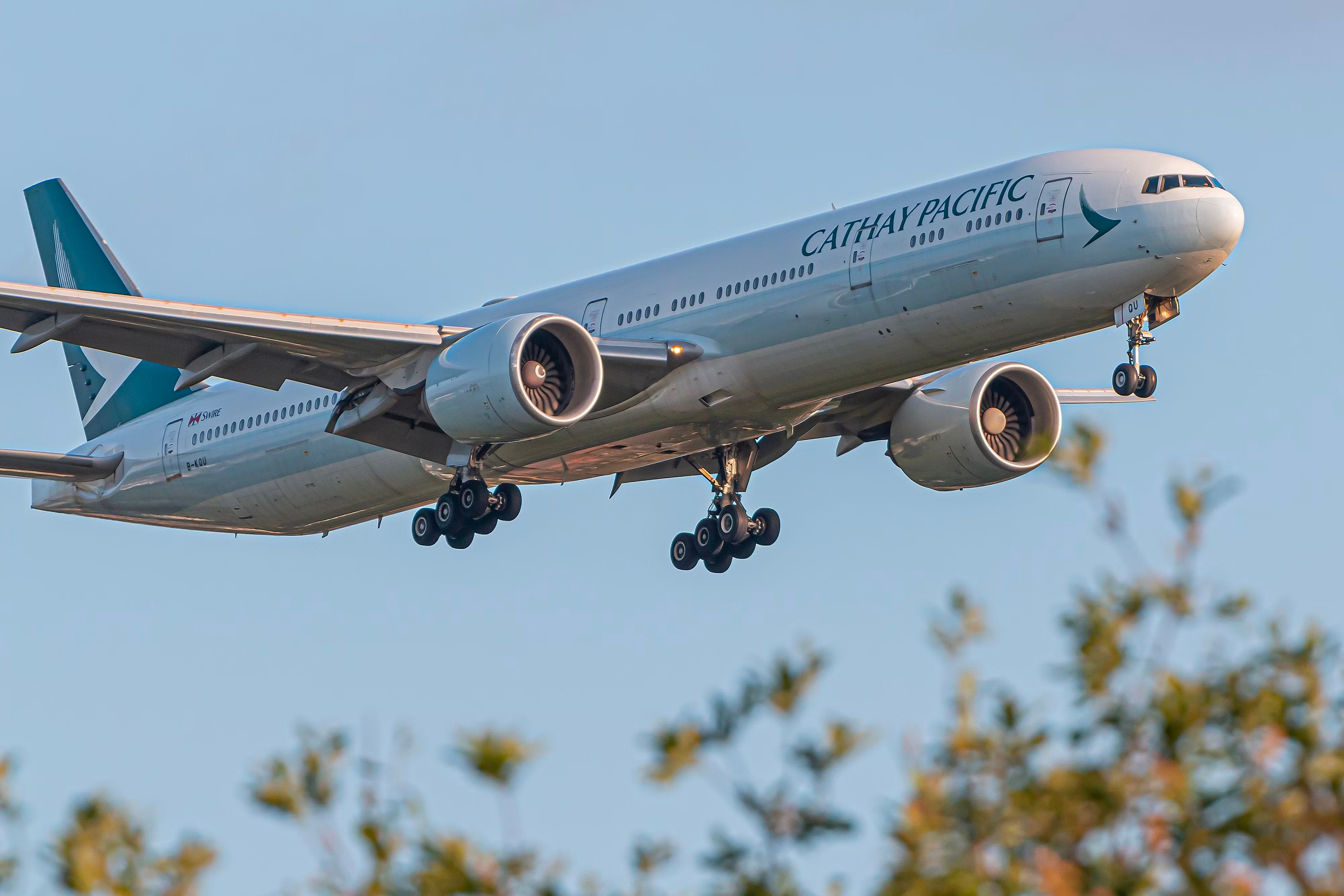
Related
Wow: Cathay Pacific Records 1st Profit After 3 Years Of Losses
The carrier made $1.3 billion in profit in 2023.
These routes are strategically chosen to cover the East and West Coasts, providing access to the US’s critical economic and cultural centers. Each destination is a gateway to its respective region, allowing passengers to connect seamlessly to other parts of the country.
What aircraft does Cathay Pacific use on these routes?
Cathay Pacific utilizes some of the most advanced aircraft for its transpacific routes, ensuring a comfortable and efficient journey. The primary aircraft used include the Boeing 777-300ER and the Airbus A350-1000.
Photo: Phuong D. Nguyen | Shutterstock
- Boeing 777-300ER: Known for its long-range capabilities and spacious cabins, the 777-300ER is a workhorse for Cathay Pacific. It features a four-class configuration with first class, business class, premium economy, and economy class, catering to a wide range of passengers.
- Airbus A350-1000: The A350-1000 is a newer addition to Cathay Pacific’s fleet and is prized for fuel efficiency and advanced technology. The aircraft offers three class configurations: Business Class, Premium Economy, and Economy Class. The A350-1000’s modern design and quiet cabin enhance the overall passenger experience. In recent times, Cathay Pacific has been eyeing new widebody aircraft to replace some of its aging fleet.
What to expect onboard Cathay Pacific
Cathay’s commitment to quality is evident across all it’s classes:
- First-class: Available on select Boeing 777-300ER routes, Cathay-Pacific’s first class offers unparalleled luxury. Passengers enjoy spacious suites with fully flat beds, premium bedding, and a personalized service that includes gourmet dining and a wide selection of fine wines and spirits.
- Business class: Both the 777-300ER and A350-1000 feature state-of-the-art business class cabins. The lie-flat seats ensure maximum comfort on long-haul flights, and the refined service includes an extensive menu and a curated selection of entertainment options. But watch out, you might have to start bringing your cutlery.
Photo: Airbus
- Premium economy: For those seeking more comfort than standard economy but without the cost of business class, premium economy is an excellent choice. Passengers benefit from wider seats, increased legroom, and enhanced meal service.
- Economy class: Even in Economy, Cathay Pacific strives to provide a pleasant journey. The seats are ergonomically designed, and passengers can access a wide range of in-flight entertainment and complimentary meals and beverages.
Cathay’s Cathay’sschedule
A closer look at flight data provides insights into the scale and efficiency of its US-bound routes. The following table summarizes critical metrics such as mileage and Available Seat Miles (ASMs) for each route according to Cirium, an aviation analytics company:
|
Flight Route |
Miles |
ASMs |
|---|---|---|
|
BOS – HKG |
7,968 |
74,516,736 |
|
JFK – HKG |
8,070 |
215,081,640 |
|
HKG – LAX |
7,260 |
126,512,760 |
|
ORD – HKG |
7,793 |
57,262,964 |
|
HKG – SFO |
6,927 |
85,340,640 |
Total operations across these routes amount to 476, with 146,196 seats and an average of 307.1 seats per departure, resulting in an impressive 1,117,429,480 Available Seat Miles (ASMs). The United States is one of Cathay Pacific’s Pacific’s social markets outside Asia.
These routes cater to business travelers, tourists, and sizable expatriate communities. The connectivity provided by Cathay Pacific between Hong Kong and the US is vital for fostering economic ties, cultural exchange, and tourism.
Competition is fearless
Cathay Pacific faces significant competition on its US routes from both regional and international carriers. Airlines such as United, American, and Delta offer direct flights between the US and Hong Kong. At the same time, other Asian carriers like Singapore Airlines, EVA Air, and Korean Air also provide competitive alternatives for their connections.
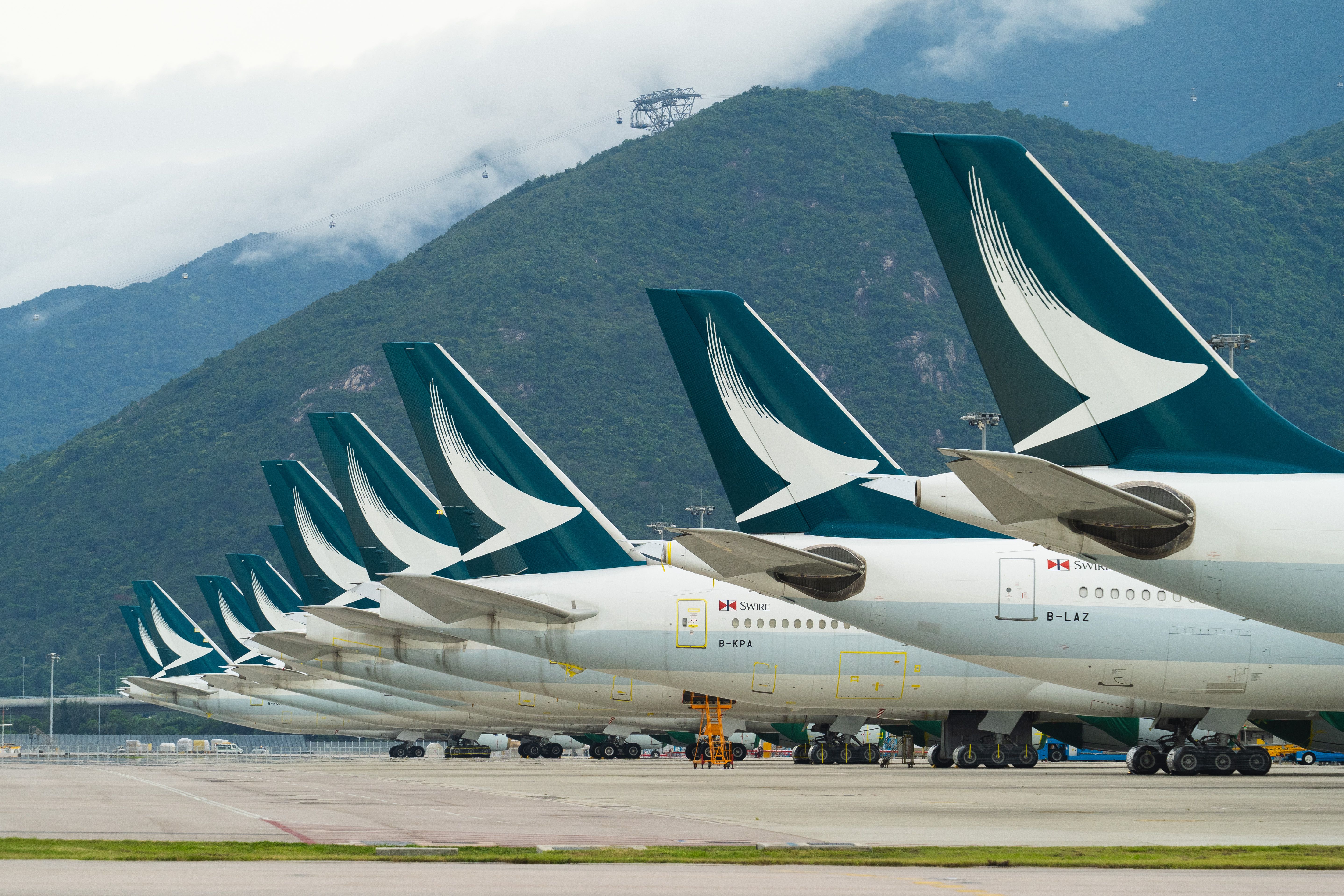
Related
Questions Over Cathay Pacific’s oneworld Future As Air China Looks To Raise Stake
Could Cathay Pacific become a member of Star Alliance?
The geopolitical landscape and economic fluctuations also pose challenges. Trade tensions between the US and China can impact passenger numbers, while economic downturns can affect travel budgets for leisure and business travelers. However, Cathay Pacific’s loyal customer base and strategic alliances help it navigate these challenges.
The future of Cathay in the US.
Cathay Pacific is well-positioned to maintain and expand its presence in the US market. The airline has shown resilience through challenging times, such as the recent global pandemic, by adapting its services and focusing on customer safety and satisfaction. Innovations in digital services and sustainability initiatives also play a crucial role in attracting a modern traveler who values convenience and environmental responsibility.
Photo: Cathay Pacific
Cathay Pacific’s Pacific routes testify to the airline’s intention to connect the world with Hong Kong. The combination of a modern fleet, exceptional service, strategic destinations, and robust operational metrics ensures Cathay Pacific remains a preferred choice for travelers crossing the Pacific. As the aviation industry continues to evolve, Cathay Pacific’s capabilities to excellence will help it soar to new heights in the competitive skies.

